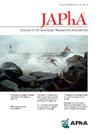关于药剂师发起的PREP和PREP使用的国家政策。
IF 2.5
4区 医学
Q3 PHARMACOLOGY & PHARMACY
Journal of the American Pharmacists Association
Pub Date : 2025-05-08
DOI:10.1016/j.japh.2025.102415
引用次数: 0
摘要
背景:为了增加PrEP(一种有效预防艾滋病毒的药物)的获取和使用,美国几个州允许药剂师独立于其他提供者向患者提供PrEP。各州实施这一政策的方式,要么是允许药剂师作为权宜之计,在有限的时间内向患者开PrEP处方,要么是允许药剂师在没有时间限制的情况下向患者全面提供这些药物。目的:本研究测试了这些政策的引入是否与PrEP使用率的增加有关,以及药剂师是否被授权在有限或无限的时间内开PrEP处方,对PrEP使用率的影响是否有所不同。本研究测试了两种政策类型是否有效,两者都不有效,或者单一政策类型是否有效。方法:采用美国50个州和哥伦比亚特区的时间序列横截面回归模型对这些政策的引入进行分析。因变量为每10万名州居民使用PrEP,自变量为具体药剂师PrEP政策的存在。控制了州一级的固定效应,也控制了州特有的和国家的时间趋势。结果:允许药师无时限提供PrEP与每10万人增加25名PrEP使用者相关,相当于2023年PrEP平均使用率的14%。允许药剂师作为PREP的临时提供者与PREP使用率的增加无关。结论:允许药师率先使用PrEP可能是促进PrEP使用、实现公共卫生目标的有效途径。本文章由计算机程序翻译,如有差异,请以英文原文为准。
State policies on pharmacist-initiated PrEP and PREP usage
Background
To increase access and use of pre-exposure prophylaxis (PrEP), medications which serve as an effective prophylaxis for HIV, several U.S. states have permitted pharmacists to provide PrEP to patients independent from other providers. States have implemented this policy either by allowing pharmacists to serve as stop-gap providers by prescribing PrEP to patients for a limited duration, or by allowing pharmacists to fully provide these medications to patients without a time limitation.
Objectives
This study tested whether the introduction of these policies is associated with increased PrEP usage and whether any such effects on PrEP usage differed by whether pharmacists were authorized to prescribe PrEP for a limited or unlimited duration. This study tested whether both policy types were effective, neither, or a single policy type was effective.
Methods
The introduction of these policies is analyzed using a time-series cross-sectional regression model across all 50 U.S. states and the District of Columbia. The dependent variable was PrEP use per 100,000 state residents and the independent variables were the presence of specific pharmacist PrEP policies. State-level fixed effects were controlled for as were state-specific and national time trends.
Results
Allowing pharmacists to provide PrEP without time limitation is associated with an increase of PrEP of 25 users per 100,000 population, equivalent to 14% of the mean PrEP usage rate in 2023. Allowing pharmacists to serve as temporary providers of PREP is not associated with any increase in PrEP usage.
Conclusion
Allowing pharmacists to initiate the use of PrEP may be an effective way to promote the use of PrEP and achieve public health goals.
求助全文
通过发布文献求助,成功后即可免费获取论文全文。
去求助
来源期刊
CiteScore
3.30
自引率
14.30%
发文量
336
审稿时长
46 days
期刊介绍:
The Journal of the American Pharmacists Association is the official peer-reviewed journal of the American Pharmacists Association (APhA), providing information on pharmaceutical care, drug therapy, diseases and other health issues, trends in pharmacy practice and therapeutics, informed opinion, and original research. JAPhA publishes original research, reviews, experiences, and opinion articles that link science to contemporary pharmacy practice to improve patient care.

 求助内容:
求助内容: 应助结果提醒方式:
应助结果提醒方式:


